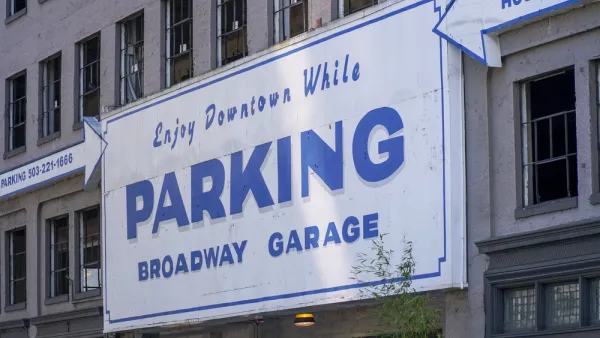A Terner Center for Housing Innovation at U.C. Berkeley analysis predicts that statewide parking reform, as proposed in Assembly Bill 1401, would have a significant impact on the cost of developing residential and commercial buildings in California.

One bill among this year's crop of legislation aimed at improving California's expensive development and housing market stands out: Assembly Bill 1401, according to an article published by the Terner Center for Housing Innovation at U.C. Berkeley. The bill, introduced by Assemblymember Laura Friedman, "would prohibit cities from enforcing parking requirements on residential and commercial properties."
The legislation is bold, according to the article, with "broad implications for achieving a variety of positive housing, economic, and environmental outcomes."
To illustrate the potential impact of the bill, David Garcia and Julian Tucker present an analysis using data from the 2019 Terner California Residential Land Use Survey (TCRLUS), including data on the effect of parking requirements for single-family and multifamily residential development projects.
The analysis predicts that AB 1401 could "significantly alter how much parking is built in new residential developments near transit."
The analysis also finds examines whether AB 1401 would lower the use of the state's Density Bonus Law, which "allows developers to gain concessions on requirements from local governments—such as lowering or eliminating parking requirements—in exchange for reserving a portion of their units at affordable prices." According to the analysis, however, the use of the law is fairly low, and where it is used, it is unclear if the law would adversely impact participation in the program.
The analysis concludes by noting the potential for AB 1401 to cut the cost of new housing and reduce greenhouse gas emissions. "However, because of consumer demand, many projects may continue to provide parking on-site regardless of AB 1401."
As for the status of AB 1401, Assemblymember Friedman reported on Twitter earlier this week that the bill had advanced out of the Assembly Local Government Committee.
FULL STORY: How AB 1401 May Impact Residential Parking Requirements

National Parks Layoffs Will Cause Communities to Lose Billions
Thousands of essential park workers were laid off this week, just before the busy spring break season.

Retro-silient?: America’s First “Eco-burb,” The Woodlands Turns 50
A master-planned community north of Houston offers lessons on green infrastructure and resilient design, but falls short of its founder’s lofty affordability and walkability goals.

Delivering for America Plan Will Downgrade Mail Service in at Least 49.5 Percent of Zip Codes
Republican and Democrat lawmakers criticize the plan for its disproportionate negative impact on rural communities.

Test News Post 1
This is a summary

Test News Headline 46
Test for the image on the front page.

Balancing Bombs and Butterflies: How the National Guard Protects a Rare Species
The National Guard at Fort Indiantown Gap uses GIS technology and land management strategies to balance military training with conservation efforts, ensuring the survival of the rare eastern regal fritillary butterfly.
Urban Design for Planners 1: Software Tools
This six-course series explores essential urban design concepts using open source software and equips planners with the tools they need to participate fully in the urban design process.
Planning for Universal Design
Learn the tools for implementing Universal Design in planning regulations.
EMC Planning Group, Inc.
Planetizen
Planetizen
Mpact (formerly Rail~Volution)
Great Falls Development Authority, Inc.
HUDs Office of Policy Development and Research
NYU Wagner Graduate School of Public Service





























